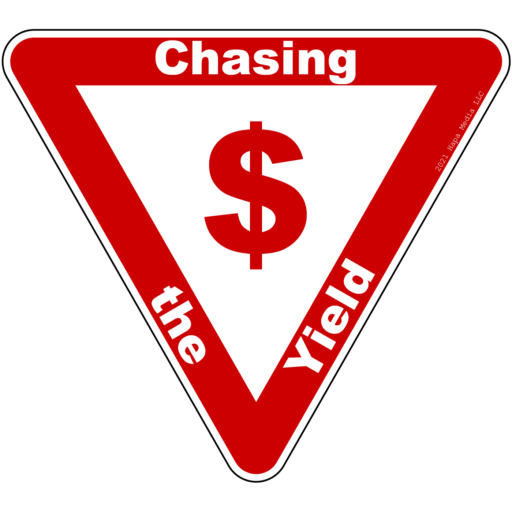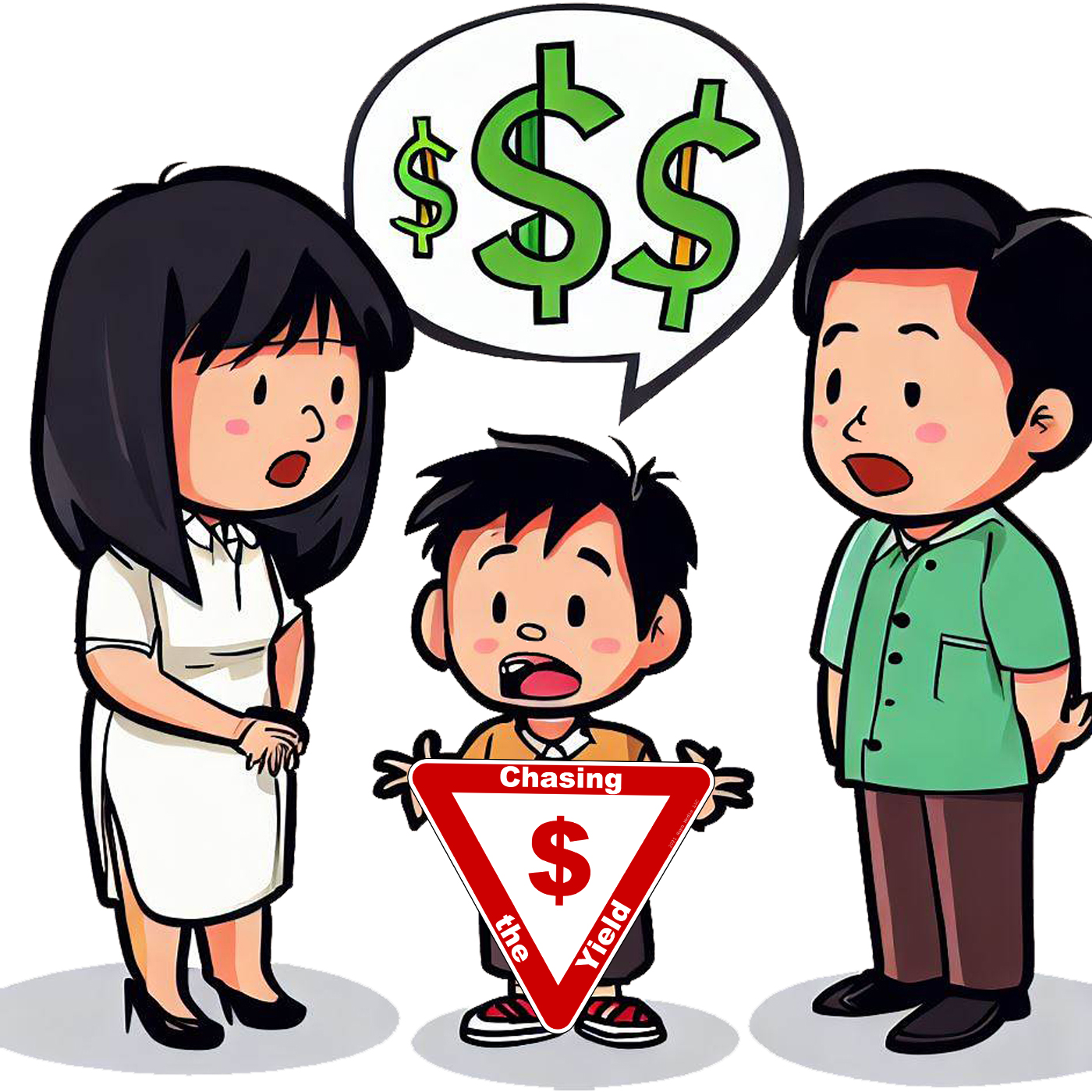I’m old. 56 to be exact. I didn’t start investing my money until I was in my mid 40s. And then I didn’t know much about what I wanted to do. I never learned anything about money from my parents and the only courses I took in school were accounting and economics. There was nothing about investing.
At first I did what all the financial columnists suggested. I put my money in index funds. And it was fine while I was working. The money grew at a moderate pace but didn’t provide me any income. Then I read an article about investing for income and that took me down the rabbit hole of dividend investing.
That one column pushed me to learn about passive income and how it would allow me to live a decent life while leaving the hamster wheel of regular life. I retired from working a 9 to 5 job 4 years ago. Had I known about dividend investing years ago I may have retired much sooner or had a larger nest egg to retire with. Here’s what I wish I knew in my 20s.
Personal Profit
What is personal profit? Personal profit is paying yourself. It’s a cliché these days and is called “pay yourself first.” Some suggest to set aside 10% of your take-home pay and put in savings or in an investment account. I don’t necessarily subscribe to that method. It’s easier said than done. Figure out the bare minimum you need to survive then pay yourself out of what remains. The key is to put aside the maximum you can. It will pay dividends (pun intended) later on down the line.

It doesn’t take a lot of work to figure out what you can pay yourself. You don’t even need a computer or smartphone. Start with a piece of paper and put your average paycheck amount at the top. Then start listing your necessary expenses below that. Necessary expenses are expenses you must pay to survive. Think food, clothing, and housing. Then list supplementary expenses. Supplementary expenses are what it sounds like, they supplement your necessary expenses. These are things like utilities and transportation. Then list discretionary expenses. Discretionary expenses are wants, not needs. They’re things like dining out (or take-out), concerts, sporting events, or other items of entertainment and/or hobbies. Subtract your expenses from your paycheck, and that gives you your personal profit.
If the amount is in the negative you’re not alone. When I was in my 20s, I definitely spent more than I made. I got married when I was 19 and had my first child when I was 20. We bought a condo, had two cars, and had to pay for daycare. Money was flowing out of my wallet like water over Niagara Falls. As a result of not understanding basic budgeting and the need to take personal profit, I spent about 20 years crawling out of debt. Credit card debt, mortgage debt, and auto loans. I had no savings and had nothing to invest.
Most of what I spent money on in my 20s, 30s, and 40s was in the discretionary bucket. As my income rose with age, so did my discretionary spending. It’s human nature. The money we spent on stuff may have temporarily made us feel good, but it was really nothing more than feeding a societal addiction to keep up with everyone else. I look back on those years with a little regret, thinking how much I would have been able to take as personal profit for my retirement years.
The bottom line is, I wish I new to only do what’s necessary, spend as little as possible to support what’s necessary, and cut out discretionary spending to the extreme.
Passive Income
Passive income is the best kind of income. It should require little to no work on your part once things are set up. At the very minimum, your initial investment (principal amount) should be stable while that investment pays you on a regular basis. If you’re young you want growth. Especially if you’re still working and you can make regular contributions to your investment portfolio.
The simplest of all passive income generating methods is the interest-bearing savings account. This bank account is the most passive way to earn income and the safest. As long as your deposit is below $250,000 for an individual or $500,000 for a joint account, the account is insured by the Federal Deposit Insurance Corporation (FDIC). Did, or do, you have a savings account? When I was a child, we had what was called a “passbook savings account.” It was called that because when you opened it, the bank gave you a passport-sized booklet where your deposits, withdrawals, and interest would be printed at each bank visit. The savings account has come back in vogue because of the Federal Reserve’s interest rate policies to curb inflation. High-yield savings accounts now will earn you 4.5% to a little over 5% of annual interest. Who knows how long this will last.
Real estate ownership is not passive income. It’s semi-passive. Yes, you put in a sizeable investment, and that investment generally remains stable or grows, but almost all income-generating real estate requires maintenance. If you’ve ever owned a house, you know you’re always fixing something. Commercial real estate requires work as well. You need to stay on top of your tenants, keep common areas in good shape, keep your building in good shape, and collect the rent. Don’t get me wrong. Owning real estate is a solid investment, but unless you’re doing most of the maintenance on your own, the subcontractors you’ll have to hire will cut into your profits. I don’t discourage it, but I know it’s not for me. It’s more passive than a 9 to 5 job in an office or factory, but still not totally passive.
In the middle, between totally passive and semi-passive lies dividend and partnership distribution income. It still requires work. You have to research the companies’ stocks before you purchase and you have to devise a strategy. But once you do those things, you mostly sit back and watch the monthly income roll in. Mind you, it’s not all cherries and roses. There are times when you’ll doubt yourself or worry when the market plunges. But, by and large, if you choose a strategy you’re comfortable with, then you don’t have to do much after your initial account set up and investment.

I have three different portfolios representing the relative risk I’m willing to take. You can look at all my portfolios here. I have low yield, medium yield, and high yield portfolios. Each one is designed with their relative safety in mind. In general, the higher the yield, the higher the risk. That’s why I have less invested in my high yield portfolio. When it’s doing well, it’s fantastic. When a company cuts its dividend, I have to scramble a bit to replace it. So far this year, I made four trades in my medium portfolio and three trades in my high yield portfolio. It’s not day trading. It’s more strategic trading. I trade based on the risk of dividend cut, the potential to take some profits and offset losses, and the potential to increase my dividend yield without compromising safety. It’s a learning curve but once you get comfortable, it’s quite nice.
I wish this was taught in school. High school would have been nice but definitely should be a basic college level course requirement.
Taxes
When I was young, I was very curious. I remember being about 9 or 10 years old and hearing something about taxes somewhere. I asked my father what they were, and he simply told me, “Don’t worry about it.” We didn’t have the Internet back in the 1970s, and the closest public library was more than 2 miles from my house. There was no way to learn about it. I knew about sales taxes but didn’t think about it or connect it to the grander taxes we all pay for just about everything. So, I didn’t worry about it… until I got my first paycheck.

The first paycheck is about the time most people learn about taxation. I didn’t know taxes were withheld from paychecks and it was a shock to learn the $3.00 an hour I was making as a teen only translated to about $2.40 or so. It was disheartening. I asked the payroll manager (there were no HR departments either back then) why so much was taken out of my check and he told me, “Welcome to the real world.” Also disheartening.
I didn’t learn the difference between how earned income and capital gains income were taxed differently for decades. I was a paycheck to paycheck guy just getting by on my bi-weekly salary.
In my 20s, I bought a condo and got a quick lesson in property taxes. I had no idea that people had to pay the government for the privilege of owning property. Back in the mid-1980s, the property taxes in the northern suburbs of Chicago weren’t too bad. Over the next 30 years, however, that would change drastically. Property taxes on a $65k condo were nothing compared to what I paid in property tax on my house. Over a period of 35 years, my property taxes on my home went from about $3,000/year to almost $12,000/year. I never imagined I’d have to rent my house from the state for $1,000/month.
Taxes was the impetus for my move to Georgia. State income tax in Georgia is higher than where I was living in Illinois (5.75% and 4.95% respectively)… for now. Georgia has legislation that will reduce the state income tax to 5.49% in 2024 and 4.99% in 2029. But the property tax savings is huge. Moving cut my property taxes by 60% all while enjoying a larger house and larger property. I used to live in Cook County Illinois where the sales tax was about 10% compared to 6% in Gwinnett County Georgia. Other expenses like gasoline and utilities are probably break even. I’ve lived in Georgia for 3 years now. I recouped the cost of moving in the first two years with the property tax savings alone.
Taxes are insidious. They’re everywhere. You will never avoid taxes but you can do your best to minimize what you pay.
No time like the present
At an early age, I wish I knew how these three topics would fit into my life. Personal profit, investing for passive income, and minimizing taxes would have gone a long way towards building wealth. The earlier you start, the better. And starting now is better than starting never.
All images created with Bing Image Creator
Disclaimer
ChasingTheYield.com and Kevin Bae are not registered investment advisors, brokers or dealers. Kevin Bae may have positions in any financial instrument, product, or company mentioned on chasingtheyield.com or on the Chasing the Yield podcast. Information provided by chasingtheyield.com and the Chasing the Yield Podcast is provided for information and entertainment purposes only and are not intended as advice or a recommendation or an offer or solicitation for the purchase or sale of any security or financial instrument. All opinions are based upon sources believed to be accurate and are provided in good faith. No warranty, representation, or guarantee, expressed or implied, is made as to the accuracy of the information contained herein. Past performance is not an indicator of future results.

